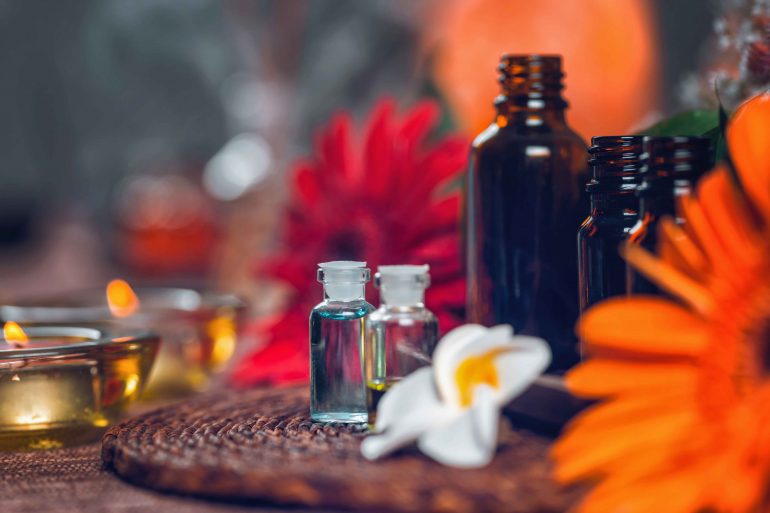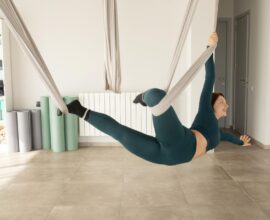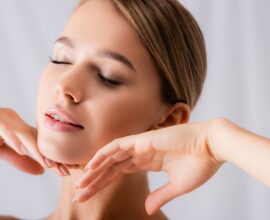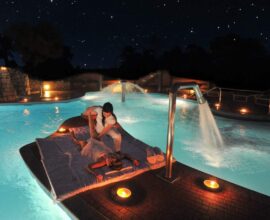Aromatherapy: what it is and what are its benefits
Aromatherapy: a brief history of the holistic discipline
Aromatherapy is an ancient discipline that fits into the field of phytotherapy or the practice that makes use of plants or plant extracts so to help an individual regain energy and psychophysical well-being.
Aromatherapy uses essential oils extracted with a particular process, which takes the name of steam distillation and allows the essential oil to be separated from the water. Another method is cold-pressing used for fruits belonging to the genus Citrus such as Citrus limon (lemon) or Citrus sinensis (sweet orange). Not all substances extracted with solvents and supercritical fluids are considered essential oils.
Essential oils are contained within various parts of the plant: from flowers to leaves, from bark to seeds, even in pericarps and roots. The first evidence of the use of resins and aromatic plants, including spices and incense, is found in the ancient Sumerian texts, but it seems that the medicinal plants were also used in Mesopotamia, Persia, China, and India.
Egyptians, Greeks, and Romans used to use ointments, perfumes, and oils for body care and the well-being of individuals, but the use of essential oils for therapeutic purposes is quite recent. However, it is probable that already around 1000 A.D. the theory and practice of distillation were known in the Arab world.
During the Early Middle Ages, the knowledge inherited from ancient populations allowed the Arab physician-alchemist Avicenna to perfect a rudimentary distiller from Egypt and extract the first rose oil. With the Crusades, rose water and the practice of distillation spread throughout Europe and during the Renaissance, the most important herbalists, including Nicholas Culpeper, John Gerard, and John Parkinson, underlined the importance of essential oils in the medical field.
A further step forward was taken in the 18th century when scientists discovered the use of chemical synthesis and began to complement, or even replace, new molecules with natural essences.
The term aromatherapy was used by French chemist René Maurice Gattefoss around the twenties of the twentieth century, author of the book Aromatherapie: Les huiles essentielles, hormones végétales.
Gattefossè carried out extensive studies on the benefits that lavender oil had on burns and wounds during his career because due to a laboratory accident, he discovered that by dipping his burned hand in a container of lavender oil, no infections appeared and the skin healed in a short time.
Then, Jean Valnet, a French doctor and surgeon considered the father of modern phytotherapy and aromatherapy, collected the legacy of Gattefossè and during the Indochina War tested the antiseptic properties of several essential oils on the wounded military, obtaining results that, according to him, were generally well above average. Valnet is also the author of Aromathérapiem, a work considered fundamental in the holistic discipline.
Aromatherapy: what are the benefits of essential oils
When we talk about aromatherapy, we can not only refer to the olfactory use of essential oils because, among the possible uses there is also oral intake, inhalation, and local application through compresses or massages such as the famous massaggio con olio ayurvedico.
Essential oils can also be added to water for a bath or foot bath, to mouthwash, to masks, creams, mud, and lotions, vaporizers diffusing the properties of the oils in the air thanks through heat, making an environment fragrant and welcoming.
In general, essential oils should always be diluted in an appropriate solvent to reduce the risks of hypersensitivity reactions and to avoid side effects. In the case of topical application, the percentage of dilution depends on the area of skin affected, the state of the skin, the oil used, and the type of treatment.
According to aromatherapy users, that is to say, those who specialize in aromatherapy, the use of essential oils is advised in the following cases:
- skin and mucosal infections
- infections of the gastrointestinal tract
- early respiratory infections and catarrhal disorders
- gastrointestinal smooth muscle spasms
- abdominal swelling
- hyposecretory dyspepsia
- skin imperfections
- insect bites
- muscle and joint pain
- disturbances in sleep
- memory and concentration problems
- stress, nervous, anxiety, depression, and panic attacks
The benefits of aromatherapy are many and change according to the essential oils used. Let’s see which are the main properties of the most popular ones:
- bitter orange: soothing and relaxing
- bergamot: anti-migraine and energizing
- chamomile: relaxing and anti-inflammatory
- cinnamon: antiseptic, carminative, and tonic
- citronella: mosquito repellent, anti-inflammatory, and vasodilator
- helichrysum: healing and toning
- eucalyptus: reactivates circulation and increases concentration
- jasmine: antispasmodic and relaxing
- geranium: stimulates circulation and fights joint pain
- incense: expectorant, fights skin aging and calms anxiety
- lavender: soothing, analgesic, decongestant
- lemon: astringent, antiseptic, and antioxidant, counteracts nausea and helps digestion
- Mandarin: promotes the night rest of children and is useful in the treatment of water retention and cellulite
- rosemary: antidepressant
- sandal: aphrodisiac and antiseptic
- tea tree: antibacterial, antiviral, antifungal, antiparasitic, healing and toning
- thyme: analgesic, antiviral, antifungal, and antibiotic
- ylang-ylang: antidepressant, hypotensive, aphrodisiac, and astringent
Do you want to discover the benefits of aromatherapy and live a dream-like holiday in a real paradise? Discover Forte Village Resort in Sardinia.






